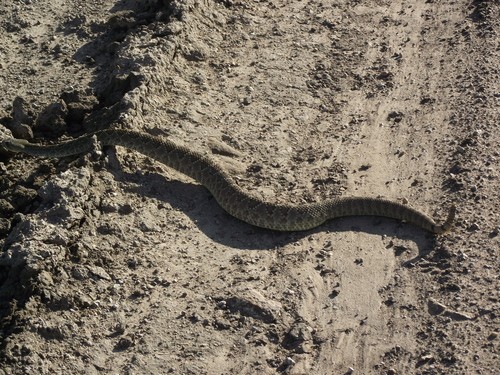Crotalus scutulatus scutulatus
A species of Rattlesnakes Scientific name : Crotalus scutulatus scutulatus Genus : Rattlesnakes
Crotalus scutulatus scutulatus, A species of Rattlesnakes
Scientific name: Crotalus scutulatus scutulatus
Genus: Rattlesnakes
Content
Description General Info
Description
Crotalus scutulatus scutulatus is characterized by a highly potent venom, making it one of the most toxic rattlesnake species. This venom has both hemotoxins and neurotoxins, which aid in efficient predation and deterrence of potential threats. Living in deserts, grasslands, and woodlands, crotalus scutulatus scutulatus plays a crucial role in controlling rodent populations, enhancing biodiversity by affecting the abundance and distribution of prey species.
General Info
Lifespan
15-20 years
Diet
Crotalus scutulatus scutulatus primarily consume small mammals, with a preference for rodents such as the Kangaroo rat. They employ a sit-and-wait hunting strategy, using venom to immobilize their prey.
Appearance
Crotalus scutulatus scutulatus is a large, heavily built snake with rough, tuberculated skin. It exhibits an impressive rattling tail, used for deterring potential threats. Its skin is primarily olive-brown to brownish-grey, darkening towards the tail and highlighted by dark, diamond-shaped blotches edged in a lighter shade. Despite its intimidating size, this snake has a relatively small head, which is nonetheless equipped with venomous fangs.
Behavior
Crotalus scutulatus scutulatus, commonly known as the Mojave rattlesnake, is a nocturnal, solitary predator primarily hunting rodents and birds. This venomous snake exhibits a 'sit-and-wait' ambush strategy, using its natural camouflage to blend with surroundings and strike prey rapidly. Its highly aggressive behavior and potent venom make it a significant threat in its habitats.
Scientific Classification
Phylum
Chordates Class
Reptiles Order
Lizards and snakes Family
Vipers Genus
Rattlesnakes Species
Crotalus scutulatus scutulatus 